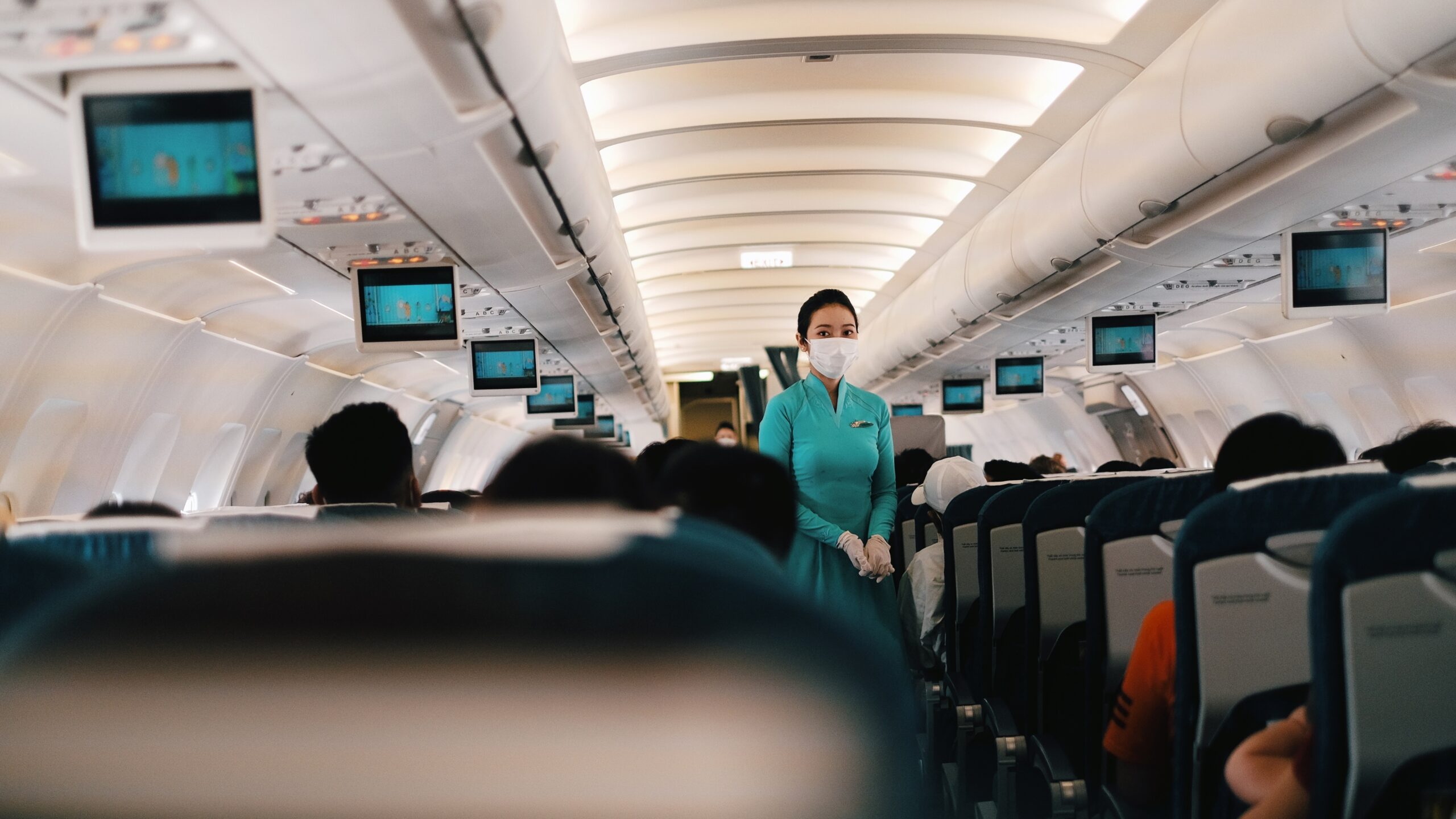When most people think of cabin crew, the first image that comes to mind is smiling professionals serving meals and drinks in the sky. While in-flight service is part of the job, the real and most critical role of cabin crew is ensuring passenger safety. Every cabin crew member is, first and foremost, a safety officer in the sky.
In fact, airlines spend months training their crew in emergency procedures, first aid, and security before allowing them to operate a single flight. Service is the visible part of the job but safety is the foundation.
This article explores the vital role of cabin crew in passenger safety, highlighting duties that go far beyond hospitality.
1. Pre-Flight Safety Checks
Before passengers even board the aircraft, cabin crew are responsible for thorough safety checks. These checks ensure that the aircraft cabin is secure and all emergency equipment is functioning.
Responsibilities include:
- Checking emergency exits and doors for proper operation
- Verifying that life vests, oxygen bottles, fire extinguishers, and first-aid kits are present and working
- Ensuring seat belts and safety cards are placed correctly
- Confirming that galleys are secured and there are no loose items that could cause hazards
These pre-flight duties may not be visible to passengers, but they form the backbone of aviation safety.
2. Passenger Briefing and Demonstrations
The safety demonstration is one of the most important tasks cabin crew perform. This includes:
- Demonstrating how to use seat belts, oxygen masks, and life jackets
- Pointing out emergency exits and evacuation procedures
- Providing special instructions for passengers seated at exit rows
Although many passengers don’t pay attention, these briefings are crucial. In an emergency, recalling these instructions could save lives.
3. Ensuring Compliance with Safety Regulations
Cabin crew are responsible for making sure passengers follow aviation safety rules throughout the flight.
Examples include:
- Checking that passengers fasten seat belts during turbulence or takeoff/landing
- Ensuring luggage is stowed properly in overhead bins
- Making sure electronic devices are switched off or on airplane mode
- Monitoring smoking policies and cabin security
By enforcing these rules, cabin crew prevent accidents and maintain a secure environment.
4. First Aid and Medical Emergencies
Cabin crew undergo extensive first aid training, often more advanced than standard courses. They must be prepared to handle medical emergencies at 35,000 feet with limited resources.
Trained skills include:
- CPR (Cardiopulmonary Resuscitation)
- Using an AED (Automated External Defibrillator)
- Handling allergic reactions, asthma, or heart conditions
- Treating burns, cuts, or fainting passengers
- Supporting childbirth in rare cases
Since there may not be a doctor onboard, cabin crew are often the first responders in medical emergencies.
5. Fire Safety and Smoke Incidents
One of the most serious risks on an aircraft is fire. Cabin crew are trained to respond instantly to smoke, fire, or unusual smells.
Fire safety training includes:
- Locating and using fire extinguishers correctly
- Handling fires in galleys, lavatories, or overhead bins
- Evacuating passengers safely in case of fire
- Wearing protective breathing equipment during smoke situations
Passengers may never witness these drills, but cabin crew rehearse them repeatedly during training.
6. Evacuation in Emergencies
In the unlikely event of an emergency landing or evacuation, cabin crew become the leaders of survival.
Duties include:
- Opening emergency exits and deploying slides
- Guiding passengers quickly and calmly out of the aircraft
- Giving clear instructions to avoid panic
- Ensuring no passenger is left behind
Studies show that a well-trained cabin crew can evacuate an aircraft in less than 90 seconds, which can mean the difference between life and death.
7. Security and Threat Management
Cabin crew also play a role in aviation security by monitoring suspicious behavior and handling threats.
Responsibilities include:
- Preventing unruly passenger behavior (air rage, intoxication)
- Recognizing and reporting suspicious activity
- Coordinating with pilots during hijack or bomb threat scenarios
- Protecting the cockpit from unauthorized access
This requires strong observation skills, confidence, and the ability to remain calm under pressure.
8. Supporting Vulnerable Passengers
Passenger safety isn’t just about emergencies it’s also about caring for those who need extra support. Cabin crew provide additional safety assistance to:
- Children traveling alone (UM Unaccompanied Minors)
- Elderly passengers who may need mobility help
- Pregnant passengers requiring comfort and monitoring
- Passengers with disabilities or medical needs
By offering this care, cabin crew ensure inclusive passenger safety.
9. Psychological Safety and Calmness
In stressful situations such as turbulence or delays, cabin crew maintain calmness and reassure passengers. A calm, confident crew member can prevent panic and maintain order in the cabin.
Their ability to handle stressful situations while smiling and communicating clearly is as important as physical safety training.
Why Safety Comes First for Cabin Crew
While inflight service is important for passenger comfort, safety is always the top priority. Airlines emphasize this during recruitment and training:
Service is optional. Safety is mandatory.
Cabin crew may spend 70% of their time ensuring safety and only 30% on actual food and beverage service. This distinction is why airlines select only the most disciplined, alert, and well-trained individuals.
The next time you see cabin crew walking down the aisle, remember: they are not just there to offer tea or coffee. They are trained safety professionals, ready to protect and assist passengers in every possible situation from turbulence to medical emergencies to full-scale evacuations.
Their role in passenger safety goes far beyond service, making them the unsung heroes of aviation.
If you are an aspiring cabin crew, focus not just on grooming and communication, but also on understanding the responsibility of safety that comes with the uniform.


